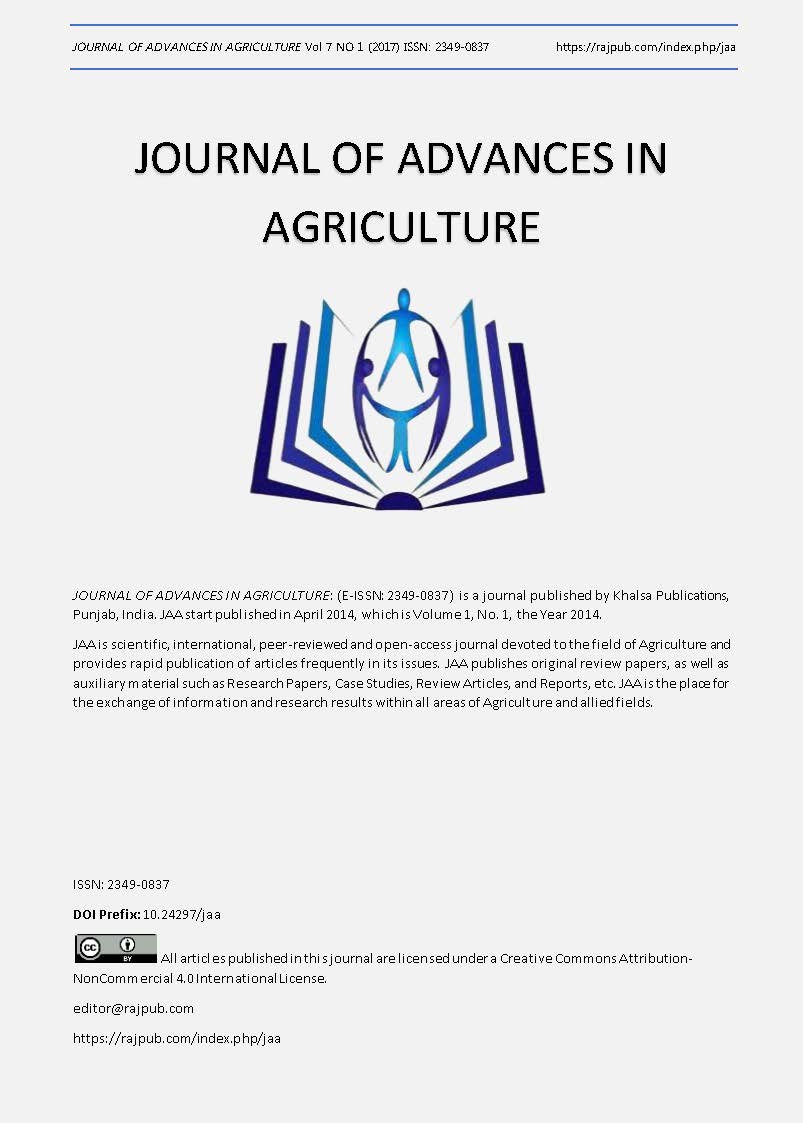FARMERS PERCEPTION AND THE HIGHLIGHTS OFTHE SOURCES OF THE CHRONIC AFLATOXIN CONTAMINATION AMONGST THE INHABITANTS OF THE SOUTH-EASTERN REGION INKENYA
DOI:
https://doi.org/10.24297/jaa.v7i1.5643Keywords:
Aflatoxin, Post-harvest, Maize, Production Chain, Mitigation, Aspergillus flavus, Animal feed, Moisture contentAbstract
There are factors that contribute to aflatoxin contamination like conducive ecological zones, stressed crops, virulent Aspergillus strains and unconventional agricultural practices. Kenyans especially in the South-Eastern region are exposed to regular doses of mycotoxins. Even after campaigns on aflatoxin mitigation in 2004, this region has had continuous cases of aflatoxin poisoning. These have not been systematically studied to identify the key entry points and contributory factors. This research was instituted to evaluate the farmers perception of the factors which contribute to chronic aflatoxin contamination in maize grains along the pre-harvest, post-harvest and marketing stages of the production chain. We studied the moisture content of maize on seven major highway centers and found that the maize was largely within the accepted levels of moisture of 11-14%. The agri-practices investigated showed that most farmers knew the basic standard practices but were not consistent in adhering to them. We found 88%approved that close spacing of maize can stress crop, 87% agreed that poor farm plant nutrition causes stress, 78 % agreed that plant residue act as reservoirsfor fungi. It was remarkable that 95 % of farmers agreed that delayed harvesting and storing of grains when the moisture content is more than 13% encouraged growth of the fungus was the main contributor of aflatoxin contamination. Furthermore, 91% indicated that, if maize combs were dropped on the soil during harvest, it increased the chances of fungal contamination. 80% of farmers agreed that the use of plastic bags to store maize in combs after harvesting could cause contamination. However, most farmers could not adequately relate contamination with the health repercussions of aflatoxin contamination. Hence, there is need to train and constantly contact understandable-sensitizations of all stakeholders; farmers, extension staff, researchers, traders, consumers, on the dangers of aflatoxin contamination along the whole maize production chain.
Downloads
Downloads
Published
How to Cite
Issue
Section
License
 All articles published in Journal of Advances in Linguistics are licensed under a Creative Commons Attribution 4.0 International License.
All articles published in Journal of Advances in Linguistics are licensed under a Creative Commons Attribution 4.0 International License.




